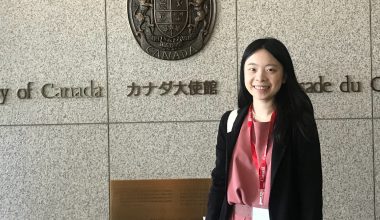在這一系列專題的第一篇,我們將從分析台灣經驗開始。本周將介紹台灣是如何成功管理 COVID-19 疫情,以及我們可以怎麼應用這些策略在個人生活和職場上。本篇重點分類出「六大應對策略」,看看台灣是如何管理疫情,並阻止病毒在國內引發大流行。
This week, we analyse why and how Taiwan has been successful in managing COVID-19, and how we can mirror some of these strategies in our personal and professional lives. We highlight 6 approaches of how they managed the virus and prevented it from becoming a pandemic in Taiwan.
- 超前部署
台灣曾面對 SARS 的嚴酷打擊,並且不想再次經歷傳染病肆虐的慘痛情況,因此超前部署許多預防措施。 在當年經歷 SARS 後,便成立了國家衛生指揮中心,整合了各個中央、區域與地方機構。
- Planned ahead based on previous experience of SARS, which was a severely negative experience for the country back in the day. Taiwan did not want something like that to happen again, and started taking early preventative steps. Post SARS, The National Health Command Centre, which integrated various agencies, was set up.
個人應用: 從過往經驗中學習並超前部署。如前一篇文章所述,「經驗學」將會是 CAREhER 本次專題企畫重點。在接下來的2篇專題中,我們將分享許多商業意見領袖的個人經驗,並希望所有讀者都能從中獲得一些收穫。
Application: Plan ahead and learn from experience. And as mentioned, this is what the CAREhER COVID playbook is about. In the next 2 releases, we will cover experience sharing from our thought leaders, and hope that all our readers will have some takeaways from them.
- 合作無間
與不同市政府協調和資訊共享- 台灣非常清楚作為一個國家需要從哪裡獲取資訊,與哪些機構合作,以達到準確掌握每日病例數的最終目標。例如: 運用國家健康保險的數據資料,並整合移民和海關的數據庫。
- Coordination with different city governments and sharing of information – Here, Taiwan was very clear on where she as a country needed to get information from, which agencies to work with, to get to the end goal of having accurate numbers of new daily COVID cases, e.g. leveraged its national health insurance database and integrated it with its immigration and customs database.
個人應用: 當我們著手準備達成某件事時,我們大概會對最終目標的樣貌有個雛形概念。我們需要知道自己的長處和限制是什麼,如何與團隊合作,共同協調知識和資訊,相輔相成。
Application: When we set out to achieve something, we have some sense of what our end goal should look like. We need to know what our strengths and limitations as an individual are, how to work as a team, and to coordinate knowledge and information.
- 溝通、溝通、再溝通
中央流行疫情指揮中心每日準時向大眾公告最新疫情訊息
- Daily briefings to the public – communicate, communicate, communicate.
個人應用: 當世界各地居家工作盛行,以及社會隔離政策下,「溝通」顯得更為重要。儘管我們使用各種工具、apps等進行遠端工作,減少接觸見面;但沒有親身互動,在溝通上會有細微的差別(例如眼神交流、肢體語言、語氣等),並且無法傳達或接收完整的訊息。因此需要溝通、溝通、再溝通。第一次傳達訊息後,需要再次確認,確認對方是否正確理解你想表達的意思,必要時重複溝通與解釋。
Application: This is especially true now, where across the world many people are working from home or under some social distancing setting. Although we are using tools and apps to facilitate remote work or reduce high touch tasks, without the in person interaction we may miss out on some nuances of communication (e.g. eye contact, body language, tone of voice) and not be sending or receiving the full message. Thus – communicate, communicate, communicate. Communicate it once, reaffirm it, and check the other party understood the message how you meant for it to be understood. Repeat if you have to.
- 簡單扼要
用簡單的訊息傳遞給社會公眾了解疫情狀況
- Simple messaging to keep the public updated on the virus situation.
個人應用: 「少即是多」- 保持溝通語言的簡單性,才能更精確清晰、有效地溝通。在緊急情況下使用冗長性言語是有危險的,可能會導致延誤,並造成生命損失,這是2005年倫敦爆炸案後進行調查的結果。在工作環境中,若發生誤解或溝通不暢,必易引起疑惑和混亂。
Application: ‘Less is More‘, so keep the communication language simple. It is clearer and more effective. Did you know that verbosity can be dangerous when used in an emergency situation? It can lead to delay that could cost lives! This was the result of an inquiry into the 2005 London bombings. In a work setting, it could certainly cause confusion, if not misunderstandings or miscommunication!
- 即時、準確與透明
台灣在防疫期間,診所能擁有就醫民眾的旅遊史、接觸史、臨床症狀等即時資訊。另外新技術的使用,例如QR碼掃描旅遊史和健康症狀的線上報告,也幫助收集及時並準確的信息,並共享在各個機構之間。
- Deliver timely, accurate & transparent information – In Taiwan, real time alerts were generated for clinic visits based on travel history & clinical symptoms. They also used new technology e.g. QR code scanning, online reporting of travel history, health symptoms to gather timely and accurate information. This was shared across coordinating agencies.
個人應用: 讓團隊成員隨時掌握所有變化,使每個人跟上速度並根據需要進行調整。保留資訊或延遲傳播的時間,對團隊運作幾乎沒有好處。
Application: Keep your team in the loop of any changes, so everyone is kept up to speed and can adjust as needed. There is little or no benefit in withholding information or delaying its dissemination with your team.
- 資源分配
台灣政府非常迅速地制定了價格,並透過健保系統進行通路分配,除此之外也增加了口罩產量並暫時禁止出口。
- Active role in resource allocation – For face masks, the government very promptly set prices, scheduled for distribution via the healthcare system, increased production and temporarily banned exports.
個人應用: 了解當前的限制條件,並合理分配、委派資源(時間、人力、預算、技能)。
Application: Be aware of what your constraints are and allocate and/ or delegate well (be it time, human resource, budget, skills).
從過去失敗的經驗中學習,在危機爆發前部署好防護措施等,都是個人與企業成長並穩定的關鍵。而溝通上精準、透明且「讓聽的人理解」的技巧,無非是職場上重要的工作法則。台灣在防疫上的成功,使得人民在大部分的日常生活與工作,都能夠持續正常運作;套用在個人生活以及團隊工作上,往往政府面對危機的處理策略,其實都是我們可以借鏡的處事方法。接下來幾周,我們會透過不同產業的商業領袖,分享更多面對危機的思考模式及應對方式,敬請持續關注。
Learning from past experiences and being prepared for a crisis are the keys for personal and corporate growth. The skills of communicating accurate information, being transparent and having people understand your message and intentions are also important. Taiwan’s success in preventing the pandemic within the country has enabled its people to continue to operate normally in most of their daily lives and at work. The government strategies of dealing with crisis can be worth learning from when it comes to personal life and work. In the next few weeks, we will share more with our thought leaders, how they have responded when faced with a crisis and what are their insights during this period of time. Stay tuned and follow us.








